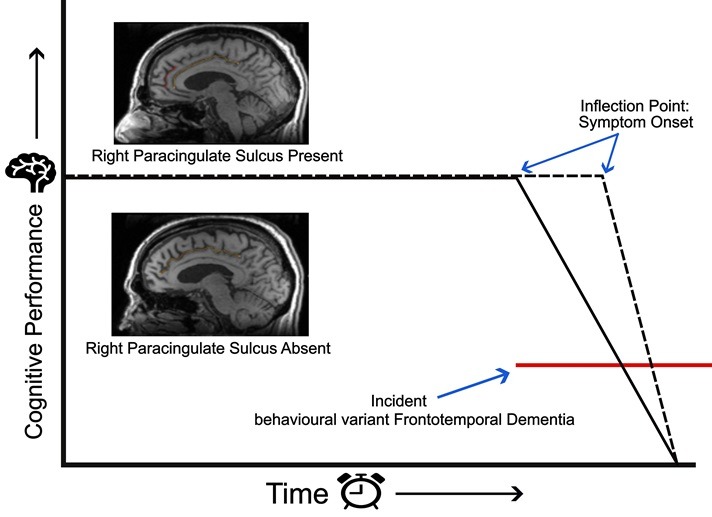
[ad_1]

Few people had probably heard of frontotemporal dementia till earlier this yr, when the family of actor Bruce Willis introduced the 68-year-old had been diagnosed with the situation.
Frontotemporal dementia is a uncommon disease – thought to account for just one in each 20 cases of dementia. Symptoms usually develop in an individual’s late 50s, first have an effect oning their behaviour, personality and language ability. Not like other types of dementia, memory solely turns into impaired within the late levels of the illness.
People diagnosed with frontotemporal dementia usually die within eight years of their diagnosis. Whereas round 30% of cases are inherited, the reason for frontotemporal dementia is massively unknown. This additionally means there are not any cures availin a position or deal withments to sluggish its development.
However current analysis I’ve published with colleagues at Lund University might have introduced us one step closer in our belowstanding of how frontotemporal dementia develops and professionalgresses. We discovered that the best way your mind seems to be might determine your resilience to the situation.
Mind folds
During pregnancy, as a foetus’s mind grows withwithin the womb, it develops its distinctive folds whereas developing withwithin the cranium. These mind folds play an important position in our later cognitive perform.
The folds that type early in foetal development are present in either side of the mind in each person. However there’s one fold that someinstances develops later on within the course of. It’s referred to as the paracingulate sulcus – and never eachone has it. In those who do have it, it could possibly both be current on only one aspect of the mind or each sides.
The paracingulate sulcus is interesting, as its presence could make a significant difference to cognitive ability. For examinationple, analysis has proven that people with a left however not a proper paracingulate sulcus have a cognitive advantage – pertypeing guesster on duties involving control and even reminiscence.
Given the hyperlink between the paracingulate sulcus and cognitive function, our analysis workforce at Lund University – alongsideaspect colleagues within the US and Amsterdam – started researching this mind fold’s position in dementia.
To actually belowstand what position the paracingulate sulcus performs, the workforce decided to concentrate on a sort of dementia the place mind damage happens in the identical area as this mind fold. The obvious alternative for this analysis was frontotemporal dementia. This aggressive type of early-onset dementia primarily assaults the frontal lobes of the mind – particularly the central portions sursphericaling the paracingulate sulcus.
Our workforce studied MRI mind photos of 186 people who had been diagnosed with frontotemporal dementia. We excluded participants who had frontotemporal dementia with a genetic trigger. Round 57% of participants had a paracingulate sulcus on the precise aspect of their mind.
We discovered that in participants who had this further fold on the precise aspect of their mind, their dementia symptoms started on average two and a half years later. This would possibly imply that the paracingulate sulcus might delay the onset of symptoms. These discoverings have been statistically significant – presenting they weren’t resulting from probability or other elements.
This two-and-a-half-year delay in symptoms might not sound like a lot, however considering the poor prognosis of the condition and the burden of symptoms, that is an excessively implyingful period of time for sufferers and their kinfolk.
Cognitive reserve
That stated, after the symptoms do start, sufferers with this further mind fold turned sicker at a sooner charge and survived for a briefer size of time than sufferers who do not need the fold. So regardless of the delay in symptoms, sufferers with and without this further mind fold nonetheless died at a similar age.
Though it might sound unusual {that a} factor can each delay symptoms and later velocity them up, this paradox is a key feature of a principle referred to in neuroscience as “mind reserve”. Mind reserve describes a structure within the mind which professionalvides resilience to a disease earlier than symptoms develop.
Critically, there turns into some extent at which the disease overcomes these professionaltective mechanisms, and the affected person develops symptoms. After this critical level, people with excessive mind reserve decline fastly – sooner than people with low mind reserve.
For examinationple, excessive mind reserve explains why Alzheimer’s disease begins later in excessively educated people – although the disease professionalgresses sooner for them when symptoms begin. According to our analysis, the paracingulate sulcus operates by a similar principle – first professionaltecting people from symptoms, then professionalgressing fastly when symptoms do begin.
Our analysis is the primary to identify a professionaltective structure within the mind which delays the onset of symptoms in people with frontotemporal dementia. If we will now uncover a means of preserving this professionaltective quality, it might result in the development of deal withments which can assist maintain symptoms – and the disease – at bay.
 – Luke Harper is a Neuroscience PhD student at Lund University, Sweden. His analysis focus is on the identification of mind reserve factors in frontotemporal dementia. He additionally works as a Consultant Neurologist at Malmö University Hospital, Sweden with a interest in Multiple sclerosis and associated diseases. This article was originally published on The Conversation.
– Luke Harper is a Neuroscience PhD student at Lund University, Sweden. His analysis focus is on the identification of mind reserve factors in frontotemporal dementia. He additionally works as a Consultant Neurologist at Malmö University Hospital, Sweden with a interest in Multiple sclerosis and associated diseases. This article was originally published on The Conversation.
To Be taught Extra:
[ad_2]